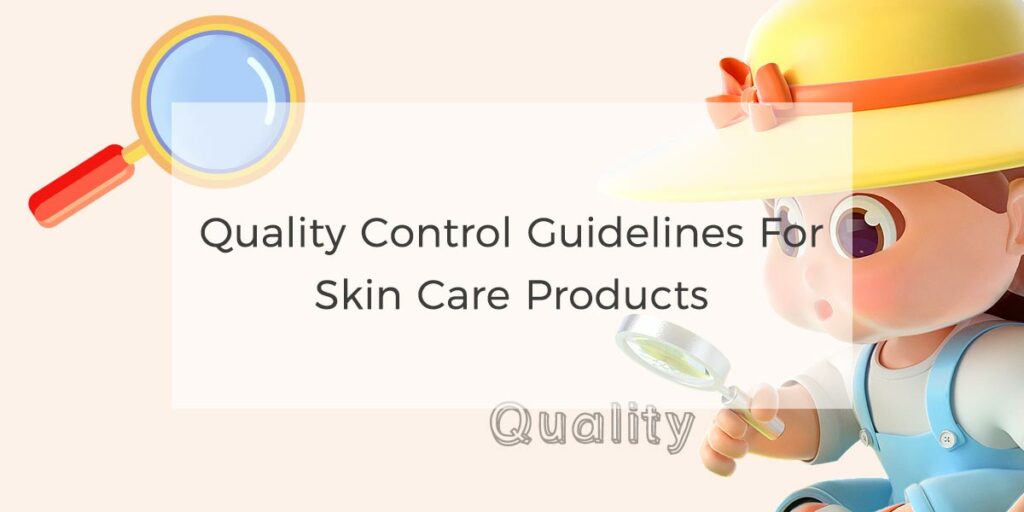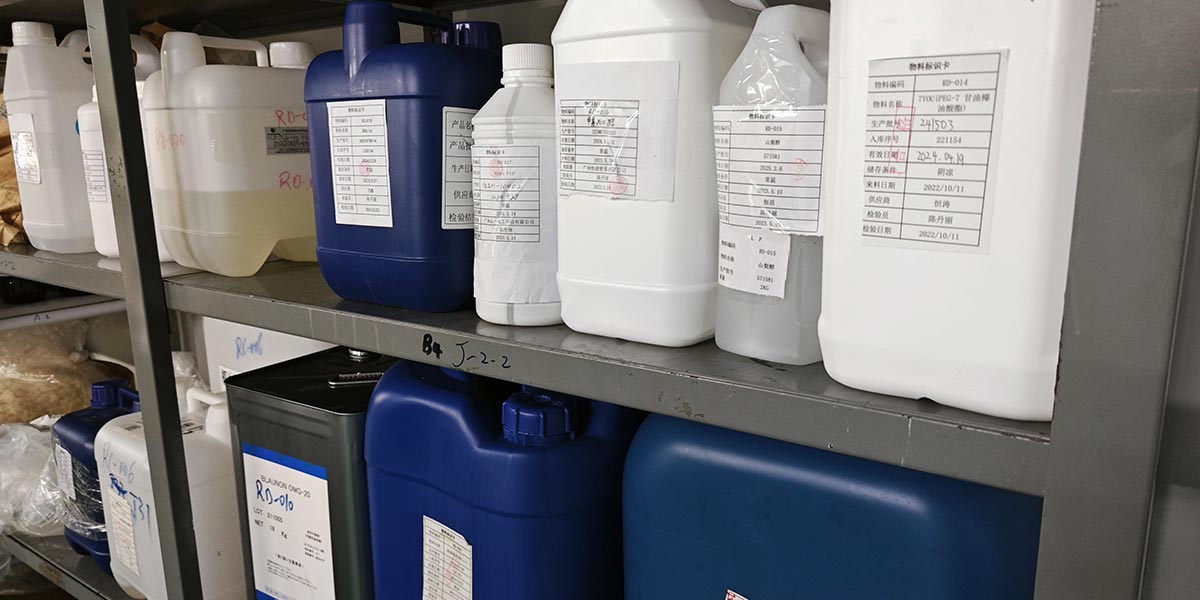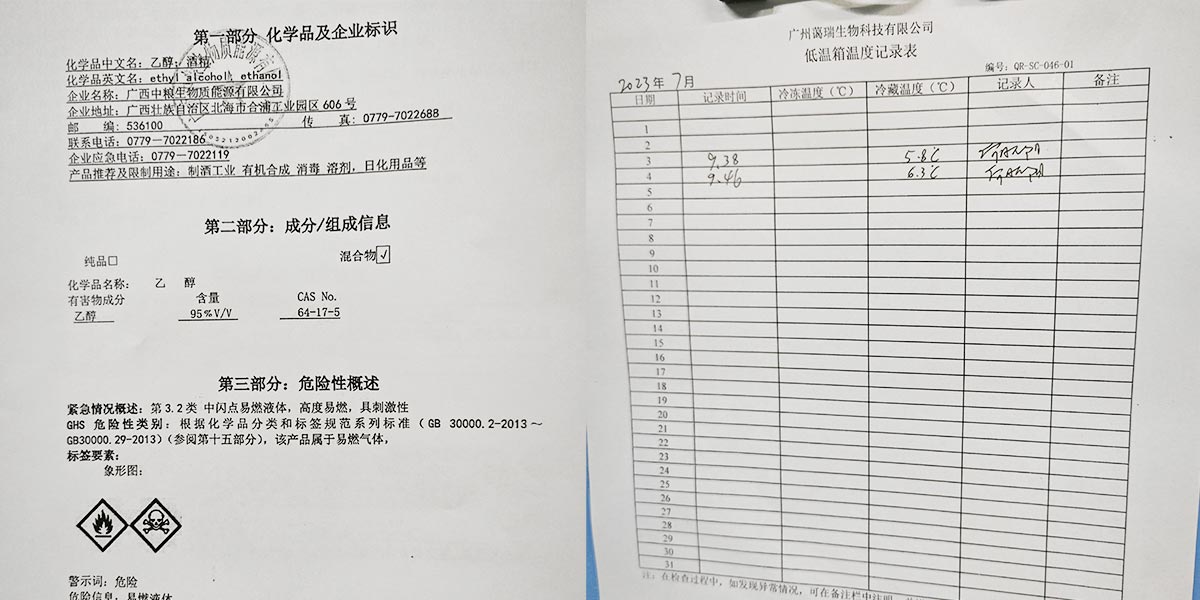To carry out quality control of skin care products, we need to consider the following aspects:
Purchase of Raw Materials
Choose a reliable supplier, and find and choose a reliable raw material supplier. Suppliers should have a good reputation, comply with regulatory requirements and provide high-quality raw materials. Conduct background checks and assessments of suppliers, including their production capabilities, quality management systems, and compliance and certifications.
Comply with regulatory requirements and ensure that the purchased raw materials comply with national and regional regulatory requirements. This includes ensuring that raw materials comply with relevant cosmetics regulations, hygiene and safety standards, ingredient restrictions and labeling requirements, etc.
Quality control and testing, establish quality control procedures with suppliers to ensure the quality and safety of raw materials. This includes inspection and testing of each batch of raw material to ensure it meets specified specifications and standards. Common testing items include component analysis, microbial testing, heavy metal testing, etc.
Traceability, ensuring that raw materials are traceable, that is, their origin and production process can be traced. This is very important for investigating and solving problems when they arise in the market. Confirm their traceability with suppliers and ensure that it is supported by the necessary documentation and records.
Establish a cooperative relationship with suppliers, establish a good cooperative relationship with suppliers, and establish a long-term and stable supply chain. Communicate and negotiate with suppliers to solve problems together and ensure timely communication and information sharing.
Risk assessment and management, conduct a risk assessment on the raw material procurement process, and take corresponding management measures. This includes evaluating and monitoring suppliers’ supply capacity, price stability, environmental sustainability, and more.
Establish alternative suppliers and establish a list of alternative suppliers to prevent production interruptions caused by problems with a single supplier. Regularly assess the capability and reliability of alternative suppliers and ensure that alternative suppliers meet the same quality requirements.
Production Process and Process Control
The production process and process control of skin care products are the key to ensuring product quality and safety. The following are the general skin care products production process and process control:
Raw material preparation: Prepare the required raw materials, including active ingredients, base oils, emulsifiers, preservatives, etc. Ensure the quality and purity of raw materials and weigh them accurately according to the recipe.
Mixing and heating: The raw materials are mixed according to the recipe. Stirring equipment is often used to ensure uniform mixing. Depending on product type and formulation requirements, the mixture may need to be heated to facilitate mixing and dissolution.
Emulsification process: For milky or gel-like products, emulsification is an important step. By using emulsifiers and appropriate equipment, the oil and water phases are mixed and emulsified to form a stable milky or gel-like product.
Temperature control: It is very important to control the temperature throughout the production process. Different ingredients and formulations may have different temperature requirements. Ensure mixing, emulsifying, and processing are performed within the proper temperature range to avoid damage or instability to ingredients.
PH adjustment: The pH value of a skin care product is critical for its stability and skin compatibility. According to the product type and formula requirements, the pH value of the product is adjusted by adding an acid-base regulator to make it within a suitable range.
Preservative treatment: Skin care products often require the addition of preservatives to prevent the growth of bacteria, mold, and other microorganisms. Select the appropriate preservatives and add them to the product at the correct concentration to ensure the safety and effectiveness of the product.
Packaging and Quality Control: Once the product is finished, it is filled into appropriate packaging containers such as bottles, jars, or tubes. During packaging, good hygiene and cleanliness are ensured to prevent contamination. At the same time, carry out necessary quality control tests, such as visual inspection, PH value determination, stability test, etc.
Recording and traceability: During the entire production process, record all key parameters and steps. This includes sources of raw materials, the accuracy of recipes, production times and temperatures, quality control test results, etc. These records are used to trace the production process and quality control of the product.
Quality Inspection and Analysis
Quality inspection and analysis of skin care products is an important step to ensure product quality and safety. The following are some common skin care product quality testing and analysis methods:
Appearance inspection: Check the appearance of the product, including color, smell, texture and overall appearance, etc. Make sure the product is free from issues such as unusual changes, odors, grains, or layering.
PH Determination: Measure the pH of the product to ensure it matches the pH balance of the skin. Use a pH meter or test paper to measure the pH of the product to make sure it is within the proper range.
Stability test: By exposing the product to different environmental conditions (such as temperature, humidity, light, etc.), observe whether the physical and chemical properties of the product are affected. This helps to assess the stability and durability of the product.
Purity and Miscellaneous Testing: Detects purity and miscellaneous in products. Use analytical methods such as high-performance liquid chromatography (HPLC), gas chromatography (GC), or mass spectrometry (MS) to detect and quantify active ingredients, additives, residual solvents, or other impurities.
Microbiological testing: detection of microbial contamination in products. By culturing and detecting microbial colonies, such as E. coli, mold, yeast, etc., to evaluate the microbial safety of products.
Efficacy test: For specific efficacy products, conduct relevant efficacy tests. For example, for anti-wrinkle products, skin elasticity testing or evaluation of anti-wrinkle activity using cell culture models can be performed.
Sensitivity test: Evaluate the irritation and allergy of the product to the skin by conducting a sensitization test using human volunteers. This can be done through methods such as patch testing, skin irritation testing, or using in vitro tissue models.
Stability index test: determine the stability index of the product under specific conditions, such as oxidation, antioxidant activity, anti-sun index, etc. This helps determine changes in product performance and quality during storage.
Toxicological evaluation: For some special skin care products, such as sunscreen or children’s products, toxicological evaluation is carried out to ensure their safety to the human body.
Quality Records and Document Management
Quality records and document management for skin care products are important aspects of ensuring product quality and compliance. The following are some common content and methods of skin care product quality records and document management:
Raw material records: record the source of each batch of raw materials, supplier information, batch number, production date, expiration date, etc. Ensure the quality and compliance of raw materials and establish traceability.
Formulation record: record the formula of each product, including ingredient name, dosage, unit, manufacturing method, etc. Ensure formulation accuracy and consistency.
Production records: record the detailed information of each production, including production date, batch number, production personnel, production equipment, production steps, temperature and humidity, and other parameters. Ensure the traceability and consistency of the production process.
Quality Control Records: Record the quality control tests and inspections carried out for each product, such as visual inspection, PH value determination, microbiological testing, stability testing, etc. Include information such as test results, methods, and operators.
Environmental records: record parameters such as temperature, humidity, air quality, and cleanliness of the production environment. Ensure that the production environment meets the requirements, and discover and solve environmental problems promptly.
Adverse Event and Complaint Records: Record details of any product quality issues, adverse events, or consumer complaints. Include problem description, findings, corrective and preventive actions, etc.
Sample retention: retain samples of each production batch, and record the information and retention period of the samples. Samples are retained for subsequent testing, verification, and traceability needs.
Document Management: Establish an appropriate document management system, including classification, numbering, filing, and safekeeping of records and documents. Ensure that relevant records and documents are easy to find and access.
Change management: Record any changes in the product formula, process, or specification, and perform change management. Including the reason for the change, who will implement it, verification results and impact assessment, etc.
Compliance documents: Retain and manage documents and certification materials related to the quality and compliance of skin care products, such as safety assessment reports, compliance certificates, test reports, etc.
During the records and document management process, it is important to ensure the accuracy, reliability, and confidentiality of records. At the same time, relevant regulations, standards, and internal quality management requirements should be followed to ensure product quality compliance verification and audit capabilities.
Staff Training and Quality Awareness
Fostering employee training and quality awareness is crucial to ensuring the quality of skin care products produced and serviced. Here are some methods and practices that can help foster employee training and quality awareness:
Establish a training plan: develop a comprehensive training plan, including new employee training, job training, and continuous professional development training. Ensure employees have relevant skills and knowledge and understand the importance of quality management.
The training content includes skin care product production process and flow, quality standards and norms, quality control methods and testing techniques, safety operating procedures and practices, adverse event handling and corrective measures, product quality awareness, and customer satisfaction.
Provide demonstration and practice opportunities: Through demonstration and practice, let employees experience the correct working methods and quality requirements. This can be done through mock operations, role-playing, and field visits.
Establish communication channels: Ensure that communication channels are open so that employees can ask questions, provide feedback, and share experiences. Organize regular meetings, team discussions, and feedback sessions to facilitate quality awareness exchange and learning.
Reward and recognition: through the reward and recognition mechanism, motivate employees to pay attention to quality and actively participate in quality management. Recognize employees who excel in performance, suggest improvements and actively participate in quality improvement to set an example and inspire other employees.
Ongoing Monitoring and Feedback: Ensure regular monitoring of the quality of staff work and provide timely feedback and guidance. Regularly conduct performance evaluations and quality reviews to ensure the success of employee training and the continuous improvement of quality awareness.
Provide continuous learning opportunities: Employees are encouraged to participate in industry seminars, training courses, and professional certifications to enhance their professional skills and quality awareness. Provide learning resources and support, such as online training platforms, books, articles, etc.
Quality culture construction: Create a positive quality culture, emphasizing the responsibility and importance of each employee for quality. Treat quality as a core value of engagement and embed it into your organization’s core values and day-to-day work.
Continuous Improvement and Feedback
Continuous improvement and feedback on quality control of skin care products is the key to ensuring the continuous improvement of product quality. Here are some methods and practices that can help with quality control improvement and feedback:
Collect and analyze data: establish a data collection system to collect quality-related data, including production process data, quality inspection data, customer feedback, adverse event records, etc. Data is analyzed regularly to identify potential issues and trends.
Conduct quality audits and assessments: regularly conduct quality audits and assessments, including internal audits, supplier assessments, and third-party certifications. Through audit and evaluation, potential problems are found and improvement measures are proposed.
Establish improvement measures and plans: Based on the results of data analysis and quality audits, identify areas that need improvement, and formulate corresponding improvement measures and plans. Make sure the improvement measures are specific and actionable, with a reasonable timeline and a responsible person.
Implement improvement measures: Put improvement measures into practice and track the progress of the implementation. Ensure improvement initiatives are properly resourced and supported and coordinated and communicated with relevant departments and teams.
Monitoring and Measuring Improvement Effects: Monitor and measure the effectiveness of improvement measures by setting key performance indicators (KPIs) and targets. Regularly conduct performance evaluation and quality inspection to ensure the feasibility and effectiveness of improvement measures.
Training and Awareness Raising: Provide training and education to increase employee quality awareness and skills to support quality control improvements. Training can include quality management methods, statistical tools, and problem-solving techniques, among others.
Establish a feedback mechanism: Establish a feedback mechanism to encourage employees and customers to provide quality problems and suggestions for improvement. Set up feedback channels such as suggestion boxes, customer hotlines, or online feedback forms. Respond to and address feedback promptly and take appropriate corrective and preventive actions.
Continuous improvement culture: Create a continuous improvement culture and encourage employees to participate in quality improvement and make suggestions. Set an example of improvement by sharing success stories and rewarding good improvement practices.
Leadership Support: Ensure adequate support and commitment from the organization’s leadership for the quality control improvement and feedback process.





